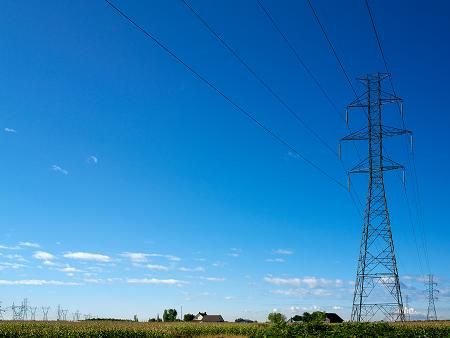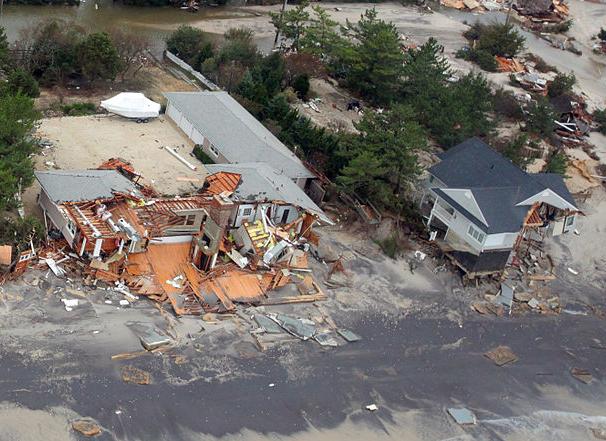Energy at the centre of the climate change equation
As the world meets for the last time before a post-2015 climate change agreement is found, it is time for the energy sector to stand up and take centre stage in the debate. Simply put, without the active involvement of the energy sector, there cannot be a definitive agreement at COP21 in Paris next year. To reduce emissions to internationally agreed levels, the industry must address the ‘energy trilemma’ – balancing security, access and mitigation of adverse effects.

It is abundantly clear from the recent IPCC reports from Working Groups II (Adaptation) & III (Mitigation) that the energy industry is central to the climate change equation. Indeed, the energy sector is the largest single contributor to global GHG emissions. In 2010, no less than 35 per cent of direct GHG emissions came from energy production. Moreover, in recent years, the long-term trend of gradual decarbonisation of energy has reversed. From 2000 to 2010, the growth in energy sector emissions outpaced the growth in overall emissions by around 1 per cent per year due to the increasing share of coal in the energy mix.
We need to act: without mitigation policies, the global average temperature is likely to rise by between 2.6°C and 4.8°C by 2100 from pre-industrial levels.
Furthermore, economic growth and the rising global population will continue to drive energy demand upwards and with it a commensurate rise in GHG emissions. There is evidence that climate change itself may also increase energy use due to greater demand for cooling, leading to an ever-growing vicious cycle.
From annual emissions of 30 gigatonnes (Gt) of carbon dioxide (CO2) in 2010, projections indicate that in the absence of policies to constrain emissions, the emissions associated with fossil fuel use, including the energy supply sector but also energy use in transport, industry and buildings, would contribute 55–70Gt CO2 per year by 2050. To reduce emissions to levels commensurate with the internationally agreed goal of keeping the temperature increase since pre-industrial times below 2°C, the share of low-carbon electricity generation by 2050 will need to triple or quadruple.
The energy ‘trilemma’
The energy community in general and energy ministers in particular need to be part of discussions on an international climate agreement: there can be no effective international climate framework in the absence of strong and balanced national energy policy frameworks. Well-functioning and balanced national energy policy frameworks are the only viable enforcement mechanism for an effective international climate agreement.
Leaders in Latin America are giving climate change issues the importance that they deserve despite wider concerns
The WEC is working hard to promote such sustainable energy that will eventually underpin a global climate accord. WEC views the world in terms of the Energy ‘Trilemma’, the trade-off between energy security, energy access and environmental mitigation. Creating the right balance between these three imperatives is the secret to the establishment of a sustainable energy future. In October, in preparation for COP20, WEC and the Colombian Presidency convened a high-level summit attended by over 20 ministers and other senior government officials from Latin America and across the world to discuss energy resilience. It was clear from that meeting that energy leaders in Latin America are giving climate change issues the importance that they deserve despite wider concerns about economic growth, job creation, energy security and energy equity. However, despite growing awareness of climate issues, it is apparent that the region also needs to give a greater focus on the third pillar of the Energy Trilemma: environmental mitigation. COP20 could provide the impetus that the region needs.
Environment stress from growing energy demand
We cannot escape the fact that growing demand for energy from a rising and increasingly prosperous population will lead to an increase GHG emissions. Global energy demand is set to increase by 1.5 per cent per year through to 2035 and this alone will require massive undertaking in terms of the required investments. This in itself makes the case for a global framework agreement.
To meet the projected growth in demand, an estimated cumulative investment of US$40.2 trillion is required across the energy infrastructure supply chain over the period 2014-2035 with an additional $8 trillion investment needed in energy efficiency measures and more energy efficient technologies.
An estimated cumulative investment of US$40.2 trillion is required across the energy infrastructure supply chain over the period 2014-2035
These investment requirements rise by over 5 per cent to US$53 trillion in cumulative investment to 2035 if the target is set to a 2°C emissions path as the speed at which the decarbonisation of the energy sector takes place would need to be increased substantially. This decarbonisation will involve shifting away from fossil fuels and doubling the investments in low-carbon technologies such as renewables, nuclear and energy efficiency.
In order to ensure that the necessary investments are made, there needs to be a clear outcome in the climate change negotiations since this will necessarily impact on key investment decisions in new energy infrastructures.
WEC’s World Energy Trilemma report points out that there will be financial implications arising from stronger climate policies. These will be mixed across the energy industry. For example, under a 2°C trajectory, net revenues for existing nuclear and renewables-based power plants would be boosted by US$1.8 trillion through to 2035, while the revenues from existing coal-fired plants would decline by a similar level. Of new fossil-fuelled plants, 8 per cent would be retired before their investment is fully recovered. Looking to oil and gas, it is estimated that no oil or gas field currently in production would need to shut down prematurely. However, some fields will not be able to be developed before 2035, and 5-6 per cent of proven oil and gas reserves do not start to recover their exploration costs in this time-frame. Further out in time, research has estimated that between 60-80 per cent of coal, oil and gas reserves of publicly listed companies are ‘unburnable’ if a global warming of 2°C is to be avoided.
The impact of extreme weather
The energy industry is not just a major contributor to climate change but a sector that climate change will disrupt. For example, as the IPCC points out, the oil and gas industry is likely to suffer from increased disruption and production shutdowns due to extreme weather events affecting both offshore and onshore facilities. Power plants and transmission infrastructures, especially those in coastal areas, will be affected by extreme weather events and rising sea levels.
In a poll of power utilities to be presented in Lima at COP20 as part of the Global Electricity Initiative (GEI, of which WEC is a partner along with the World Business Council for Sustainable Development and Global Sustainable Electricity Partnership) it was revealed that 72 per cent of companies indicate that extreme weather events have severely affected their operations and infrastructure and have already caused power outages at least once in the last ten years.
Critical energy transport infrastructure is at risk. Electricity grids will be impacted by storms, and the rise in global temperature may affect electricity generation including thermal and hydroelectric stations in some locations. In general, the industry has options for adapting to climatic changes, but at huge costs.
Extreme weather events such as Hurricane Sandy in 2012, which inflicted about US$60bn in damage in the north-east of the United States, is evidence of the need for an amplified focus on adaptation by many power companies
Extreme weather events such as Hurricane Sandy in 2012, which inflicted about US$60bn in damage in the north-east of the United States (pictured right), is evidence of the need for an amplified focus on adaptation 
Energy ministers need to be at the centre of the climate change negotiations. WEC through its events and network of leaders at a national level continues its work to make sure energy leaders put the environment at the top of their agenda and contribute to building the national frameworks that will contribute to finding a global agreement in 2015. Lima absolutely needs to take a positive step towards a final accord in Paris in 2015.








